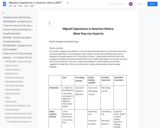
In the spring of 1918, the United States was embroiled in World War I, fighting alongside the English, French, and Russians against the Central Powers of Germany and Austria-Hungary. In total, 70 million men were at war on multiple fronts across Europe, Russia, the Middle East, and Northern Africa. The tide was finally turning for the Allies after a crushing offensive by German forces mere weeks earlier. Then, a fierce enemy intervenedan outbreak of influenza that would decimate entire regiments and towns, kill civilians and soldiers alike by the millions, and rapidly become a global pandemic. This disease weakened forces on both sides, changing not only the course of the war but also the economies and population stability of every affected nation. In the long term, this particular outbreak would inspire research on an unprecedented scale and lead to advances in science and medicine, forever altering our understanding of epidemiology. From the spring of 1918 to early 1919, no aspect of life remained untouched by the pandemic for Americans at home and on the front. This exhibition explores the pandemics impact on American life. This exhibition was created as part of the DPLAs Digital Curation Program by the following students as part of Dr. Joan E. Beaudoin's course "Metadata in Theory and Practice" in the School of Library and Information Science at Wayne State University: Bethany Campbell, Michelle John, Samantha Reid-Goldberg, Anne Sexton, and John Weimer.
- Subject:
- History
- U.S. History
- Material Type:
- Diagram/Illustration
- Primary Source
- Unit of Study
- Provider:
- Digital Public Library of America
- Provider Set:
- DPLA Exhibitions
- Author:
- Anne Sexton
- Bethany Campbell
- John Weimer
- Michelle John
- Samantha Reid-Goldberg
- Date Added:
- 04/01/2015
